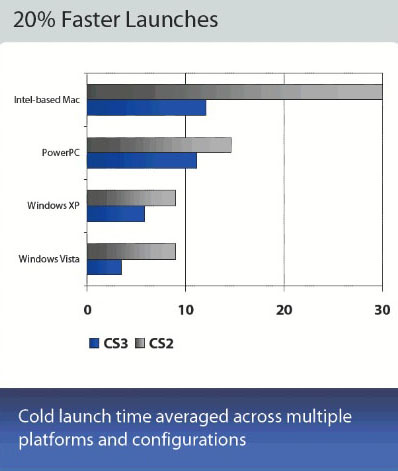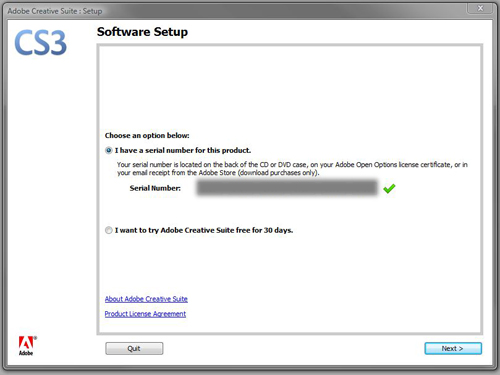
- #ADOBE PHOTOSHOP CS3 ACTIVATION MAC FULL#
- #ADOBE PHOTOSHOP CS3 ACTIVATION MAC SOFTWARE#
- #ADOBE PHOTOSHOP CS3 ACTIVATION MAC CODE#
- #ADOBE PHOTOSHOP CS3 ACTIVATION MAC PROFESSIONAL#
- #ADOBE PHOTOSHOP CS3 ACTIVATION MAC WINDOWS#
#ADOBE PHOTOSHOP CS3 ACTIVATION MAC SOFTWARE#
While I can understand the irritation and/or annoyance expressed, it’s also not realistic - the vast majority of software users are not, nor will they ever be, programmers capable of contributing to an open source programming project. Without feedback from people using the software, it’s never going to improve, at least not at any rate that would satisfy the targeted audience. In all seriousness though - open source software can’t, nor should it, operate in a vacuum. Things would be ever so much easier and quieter without users. And anyway, if gradma will try it, she won’t make heads or tails of that UI. Don’t kid yourselves – GIMP aims much higher than the regular gradma who wants to crop her holiday pictures. And, NO, it’s not suitable for regular people either.

#ADOBE PHOTOSHOP CS3 ACTIVATION MAC PROFESSIONAL#
I’m a professional designer, I know other professional designers and neither them or me would touch GIMP with a ten foot pole. I don’t know how almost every other image editing application has a sane UI, one you can actually work with from the first time you see it.Īnd I’m really sick of people saying that they work better with GIMP than with Photoshop. The fact that there is no title bar or main window is really annoying, but still way, way, way better.
#ADOBE PHOTOSHOP CS3 ACTIVATION MAC WINDOWS#
What’s disturbing is the clumsy looking interface design, with big controls just thrown around, and tens of not so little windows that leave little room to image editing.ĬS3 for Windows is interface heaven. I’m no GIMP apologist, but you can resize the toolbox. Once this is done, the GIMP might become the most popular painting application. Be creative! Make sure the tabs are good looking with nice bevels and when you maximize the window it does *NOT* cover the tab bar but it stretches until just under the tab bar. So, tab with index 0 would activate the address in the first element etc etc. This can easily be achieved by storing the address of each window in an array that would hold memory addresses. You click on a window and the same tab as the window index gets activated and vice versa. The tab index would correspond to the window/form index. Put that toolbox/sidebar inside a window (docked to the side with the ability to undock it) and create a tab bar on the right side and for each window, a new tab is created. There needs to be one menu bar and everything should live inside a window. One thing they need to pay attention to is the menu bar.

Thanks for that! To me a tab-based single document interface is just as good as an MDI if not better. “There have been discussions about a single-window tabb-based interface that can probably interest a few people.”

Nordholts says work is also being done in this area.
#ADOBE PHOTOSHOP CS3 ACTIVATION MAC CODE#
“I don’t really see any major challenges regarding higher bit depth, code just needs to be written.”Īnother common complaint regarding the GIMP is its rather diffused and unintuitive interface, with its multiple windows. Some wrappers might need to be written in order to provide support for legacy components within the new framework, “but that’s not really rewriting code”. We can only establish that work is being made and will eventually be finished.”Īs for the bit-depth issue, Nordholts assures that the legacy code in the GIMP that assumes 8 bits per channel doesn’t need to be rewritten- it needs to be replaced by GEGL.
#ADOBE PHOTOSHOP CS3 ACTIVATION MAC FULL#
Nordholts explains that the GIMP already has a core fully capable of offering high bit-depth and non-destructive editing, but that “What needs to be done is adapt code so that users can make full use of this currently isolated core.” He added: “It is impossible and pointless to speculate about a specific date when this will be complete.

“GEGL provides infrastructure to do demand based cached non destructive image editing on larger than RAM buffers,” GEGL’s website explains, “Through babl it provides support for a wide range of color models and pixel storage formats for input and output.” GEGL also plays a role in enabling GIMP to have a high-quality colour management workflow, but this last feature will also require a lot of work on the GIMP core. High bit depth support and non-destructive editing will be delivered through GIMP’s integration of GEGL, the Generic Graphics Library, which is a graph-based image processing framework. Nordholts speaks about the current state of affairs, explains what is going on deep inside the GIMP (and GEGL) and also lifts a corner of the veil about what is to come. Today Linux & Photography blog features an exclusive interview with Martin Nordholts, one of the core contributors to GIMP. Three hot topics in photography editing – that users have been waiting for for a long time now to appear in GIMP. High bit depth support, non-destructive editing (so called “effect layers”) and colour management.


 0 kommentar(er)
0 kommentar(er)
